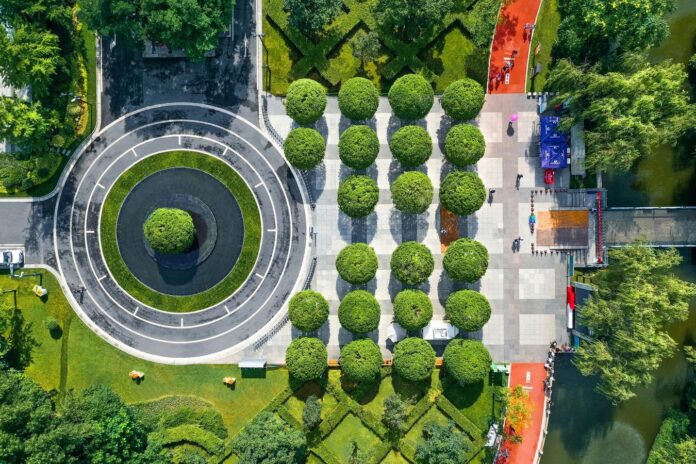
Urban planning is a technical and political process concerned with the use of land and design of the urban environment, encompassing air, water, and the infrastructure passing into and out of urban areas. It involves the arrangement and design of buildings, public spaces, transport systems, and the provision of public services.
The role of public spaces in urban planning is to act as the heart of urban life, providing a shared environment where community interaction and integration occur. They foster social cohesion, support public health, and contribute to the aesthetic value of a city. The architecture of cities, or the collective form, style, and function of its buildings and spaces, are molded by the design and availability of these public spaces.
This article examines the relationship between public spaces and urban planning, and how the architecture of cities is shaped by this dynamic interaction. The historical evolution of public spaces is explored, along with their key elements. This article ponders the future of urban spaces, focusing on the technological and sustainable advancements that could redefine city landscapes.
The History and Evolution of Public Spaces in Urban Planning
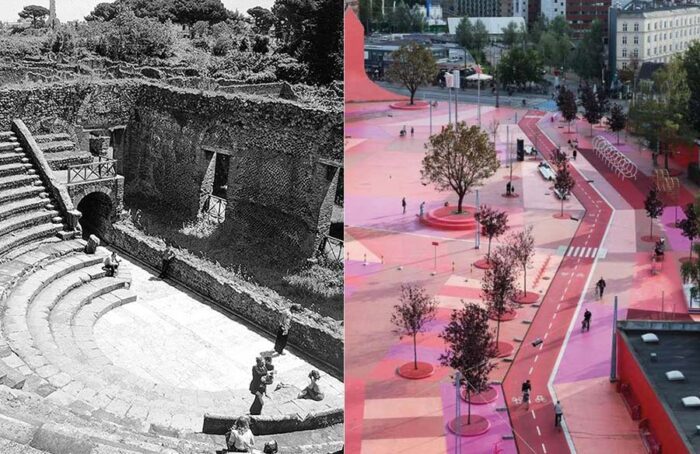
In Greek and Roman cities, public spaces like the Agora and Forum were the center of civic life, playing host to political discussions, markets, and social gatherings. In ancient Eastern cities, courtyards, gardens, and bazaars were spaces designed for social interaction and community bonding. Public spaces have been central to urban living since the dawn of civilization, fostering cultural exchange, economic activity, and social cohesion.
Transitioning from medieval to modern cities, public spaces underwent significant transformation. Medieval cities were often characterized by narrow, winding streets and a lack of open spaces. As cities grew during the Renaissance and Enlightenment, town squares, public parks, and wide boulevards began to emerge. This shift was motivated by an increased focus on humanistic principles, which valued the creation of aesthetically pleasing and functional spaces for public use.
With a rapid influx of population into cities during the Industrial Revolution, urban spaces became densely packed, often leading to poor living conditions. The need for healthier, more livable environments prompted architects to create more open spaces like public parks. At the same time, urbanization sparked a rise in private transport, leading to the allocation of public space for roads and parking. The impact of industrialization and urbanization created a complex dynamic between the need for open public spaces for recreation and the demands of a growing, modernizing society.
Key Elements of Public Spaces in Urban Planning
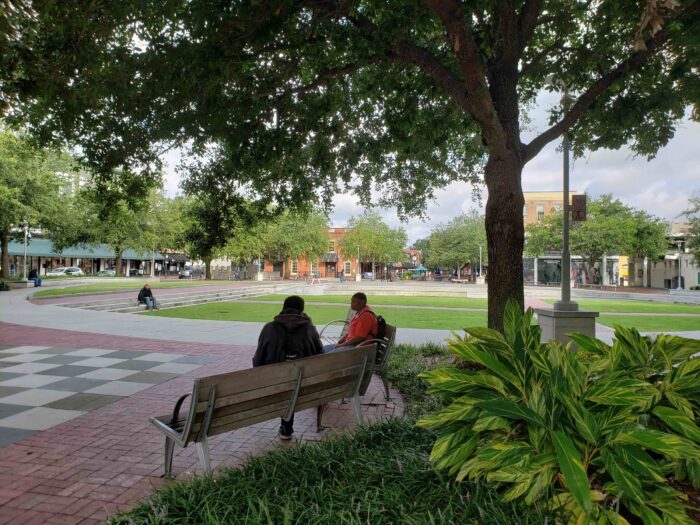
Walkability
This attribute encourages pedestrian movement, making it easier for people to navigate through their cities. Walkability not only promotes physical activity and social interaction but also reduces dependence on motorized transport, thereby mitigating environmental pollution.
Accessibility
An accessible public space ensures that all people, regardless of age, gender, ability, or socio-economic status, can use and enjoy it. This includes providing ramps for wheelchair users, tactile pavements for the visually impaired, and easy access to public transportation.
Diversity and Inclusivity
They should accommodate different activities and functions, such as recreation, relaxation, socializing, or cultural expression. Moreover, they should be designed with an understanding of local culture and community, fostering a sense of identity and belonging.
Safety and Security
A well-designed public space should make its users feel safe at all times, whether it’s day or night. This can be achieved through good lighting, clear sight lines, and the presence of people, which can deter criminal activity and foster a sense of community.
Green Spaces
They provide a respite from the urban hustle, improve air quality, and lower urban heat. Besides their environmental benefits, green spaces also support recreational activities and boost mental health, making them indispensable for urban living.
The Role of Architects in Urban Planning
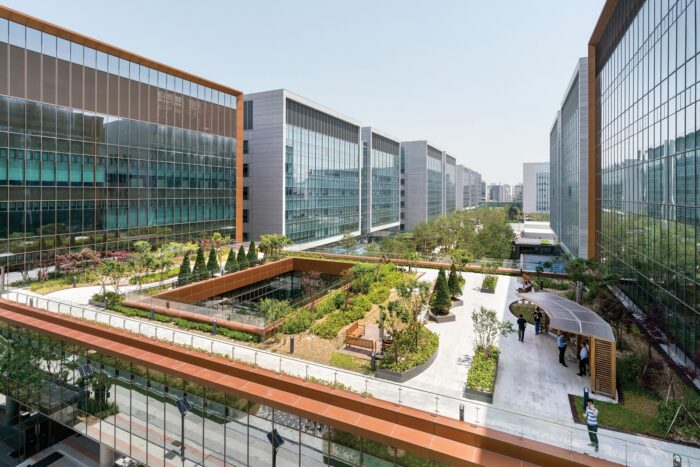
As planners, commercial architects are instrumental in determining the layout and structure of cities, carefully balancing aesthetic considerations with public needs. Their task is to create a harmonious blend of form and function, ensuring that spaces are not only visually pleasing but also accessible, safe, and user-friendly.
Architectural design greatly influences community building. Thoughtfully designed public spaces can foster social interaction, encourage civic participation, and engender a sense of identity and belonging among residents. The role of architects extends far beyond mere design, deeply influencing how people experience and engage with their cities.
The Future of Public Spaces
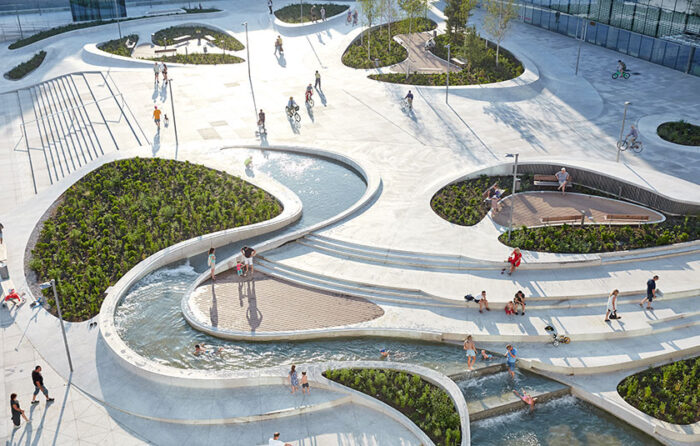
Smart Cities and the Integration of Technology in Public Spaces
Technology is increasingly being used to enhance public spaces and improve urban living. Smart city initiatives incorporate elements like free Wi-Fi in parks, sensor-enabled lighting, and interactive digital kiosks. These technologies aim to improve connectivity, optimize resource use, and enhance the user experience of public spaces.
Sustainable Design and Green Architecture
As concerns about climate change intensify, city planners and architects are integrating environmentally friendly practices into their designs. This includes creating energy-efficient buildings, promoting use of renewable energy sources, and prioritizing green spaces. These approaches not only mitigate environmental impact but also create healthier, more livable urban environments.
Post-COVID-19 Pandemic
The pandemic has emphasized the importance of adaptable and resilient urban spaces. There is a growing need for public spaces that can accommodate social distancing and outdoor activities. The pandemic has highlighted the role of public spaces in supporting mental health, prompting a reevaluation of their design and function.
Public spaces are the heartbeat of urban living, influencing the architecture of cities and significantly impacting the quality of urban life. As our cities continue to evolve, considerations such as walkability, accessibility, diversity, sustainability, and technology integration become increasingly paramount in urban planning. By understanding the historical, current, and future influences on public space design, we can strive towards creating cities that are not only aesthetically pleasing, but also inclusive, resilient, and conducive to the well-being of all their residents.








